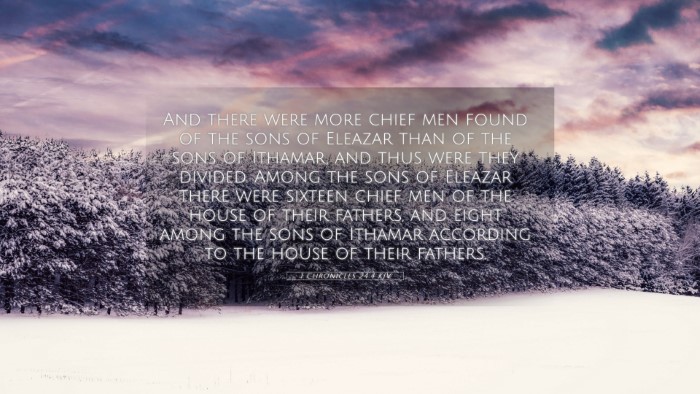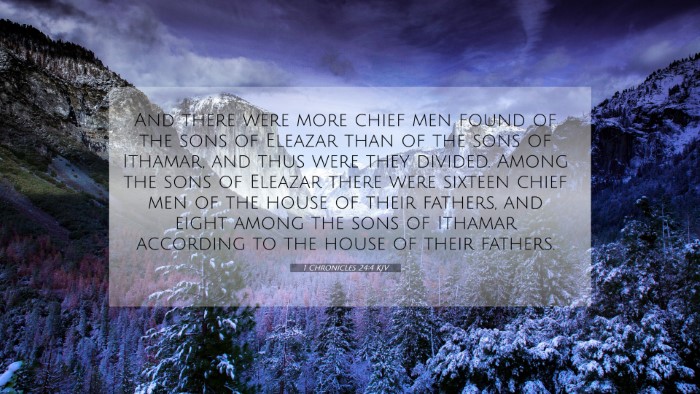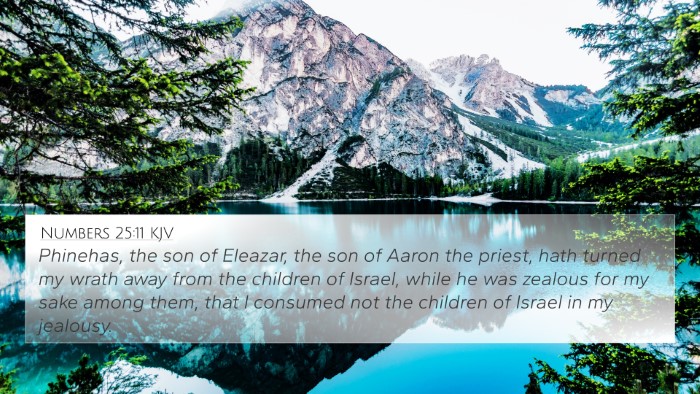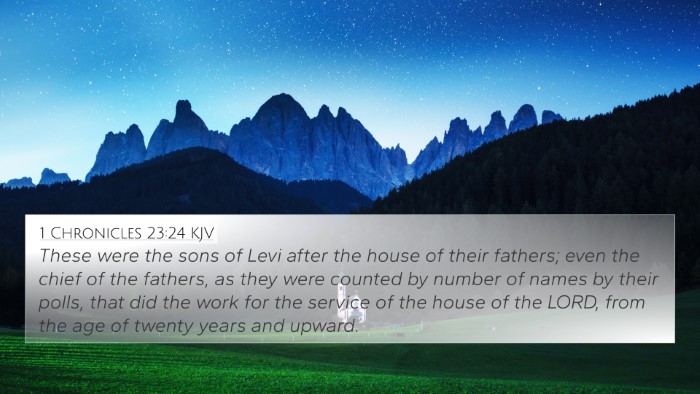Understanding 1 Chronicles 24:4
Verse Context: 1 Chronicles 24:4 states, "And there were more chief men found of the sons of Eleazar than of the sons of Ithamar; and thus were they divided." This passage references the organization of the Levitical priesthood, specifically naming the descendants of Aaron and their roles within the priestly system.
Commentary Insights
This verse highlights the divisions within the Levitical families that served in the temple, showing the importance of order and structure in worship. Below are interpretations derived from notable public domain commentaries:
-
Matthew Henry: Henry emphasizes that the division of the priestly houses was critical for ensuring that duties were fulfilled in an orderly manner. The greater number of the sons of Eleazar signifies their prominence and perhaps the specific qualifications they held for various priestly functions.
-
Albert Barnes: Barnes notes that the designation of more chief men from the sons of Eleazar than from Ithamar indicates a special favor or responsibility entrusted to the Eleazarites. This division is significant for understanding the continuity of worship practices as established by Moses.
-
Adam Clarke: Clarke provides insights on the historical context, explaining how the roles of these families were entrenched in the religious life of Israel. He posits that while Eleazar's descendants received greater responsibilities, it does not diminish the importance of Ithamar’s line but reflects the organizational structure necessary for effective worship.
Key Themes
1 Chronicles 24:4 can be connected to several themes prevalent in Scripture:
- Authority and Responsibility: The structure signifies God’s design for leadership within His people.
- Order in Worship: The importance of order in the worship of God can be traced back to the Mosaic law.
- The Role of Priestly Families: The delineation of duties highlights the significance of priestly lineage in ancient Israel.
Bible Verse Cross-References
This verse establishes connections with various other scriptures, providing deeper insights into the roles of priests and their familial lines. Below are notable cross-references:
- Exodus 28:1: Here, God commands Aaron and his sons to serve as priests, establishing the foundational roles recognized in 1 Chronicles 24.
- Leviticus 10:6-7: This passage discusses the responsibilities and consecration of priests, linking to the need for structured leadership highlighted in Chronicles.
- Numbers 3:4: The genealogical records of Aaron's sons are discussed here, emphasizing the significance of lineage.
- 1 Chronicles 6:4-15: This section provides a genealogy of the Levites, complementing the lineage considerations in 1 Chronicles 24.
- 1 Chronicles 9:10-11: The establishment of priestly duties is reiterated with specific mentions of their roles within the temple.
- 2 Chronicles 8:14: This text underscores the importance of the priestly divisions during the reign of Solomon, linking directly back to the organization mentioned in Chronicles.
- Hebrews 7:11: New Testament insight is given into the priestly order, reflecting on how these Old Testament structures transition into the New Covenant.
Conclusion
1 Chronicles 24:4 not only chronicles the lineage of the priests but serves as a reminder of God's organized plan and the significance of priestly duties within the Israelite community. By understanding this verse in the context of others, readers can appreciate the continuity of God's work through His appointed leaders. This theme of structure and divine order remains a critical aspect of biblical theology.
Further Exploration
For deeper study of related themes, consider using tools for Bible cross-referencing. Methods such as a Bible concordance or a Bible cross-reference guide can enhance understanding of these connections between verses, illuminating how the Old Testament laws and structures find their resonance in New Testament teachings.





